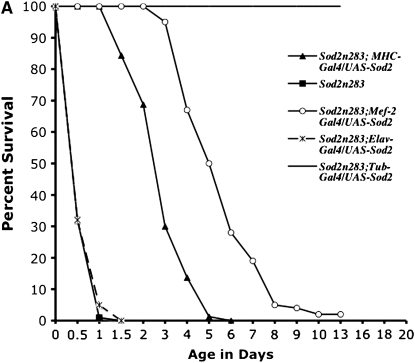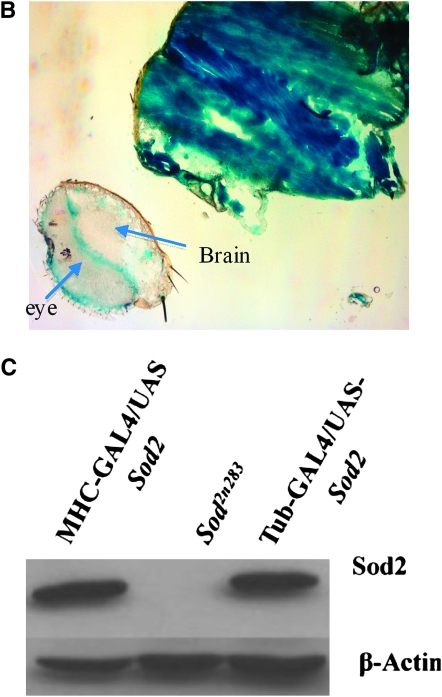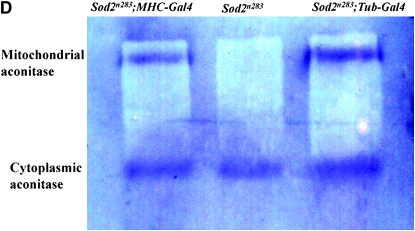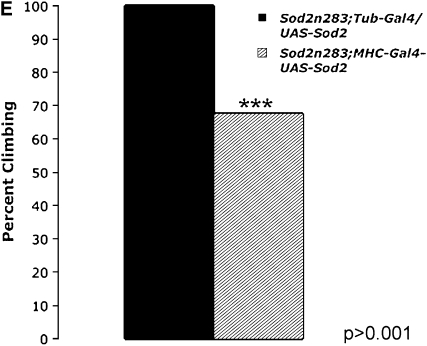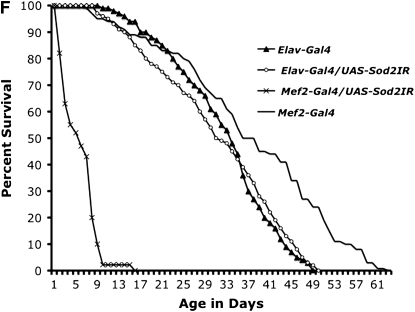Figure 4.—
SOD2 protection is more effective in the muscle than in neurons. (A) Panneural expression of SOD2 with the Elav-GAL4 driver could not improve the survival of Sod2n283. However, expression of SOD2 in the muscle with MHC-GAL4 and Mef-2-GAL4 ameliorates the reduced survival phenotype with maximum life span extended up to 6 and 8 days, respectively. (B) Saggital section through an MHC-GAL4;UAS-LacZ fly demonstrates the specificity of the MHC promoter to drive lacZ expression in muscles only. The majority of the fly thorax is composed of flight muscle; therefore, an abundance of lacZ activity was observed. LacZ staining was observed in a minute amount of muscle surrounding the eye (arrow). Brain and retina are mostly neuronal; these two structures therefore remained unlabeled. (C) Protein was extracted from the muscle-rich thorax and immunoblotting was performed. The MHC-GAL4 driver restored SOD2 expression in muscles of Sod2n283 flies almost to the same level as Tub-GAL4, an ubiquitous driver. (D) The mitochondrial aconitase Fe-S cluster enzyme is inactivated in Sod2n283 because of ROS. Mitochondrial aconitase activity was restored in muscles of Sod2n283 flies when SOD2 activity was reinstated to the muscles. (E) Selective expression of SOD2 in the muscle helped Sod2n283 flies regain locomotive ability. After 24 hr of eclosion ∼83% of Sod2n283 flies were able to climb vertically up >4 cm. P < 0.001. (F) Selective reduction of SOD2 with a UAS-SOD2 RNAi in muscles and neurons shows differential effect on survival. Muscle-specific suppression of SOD2 causes severe reduction in life span, whereas suppression of SOD2 activity in neurons does not affect their survival.

